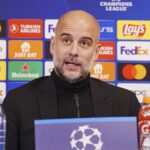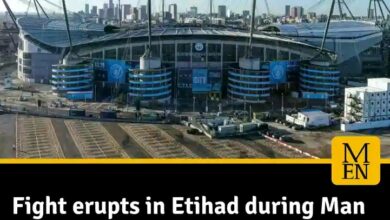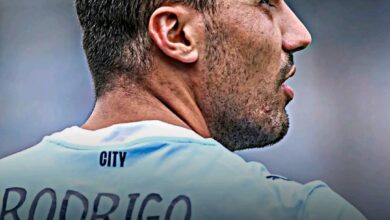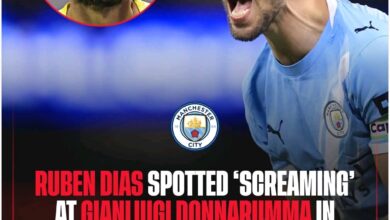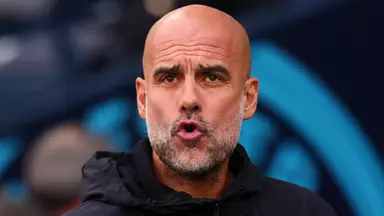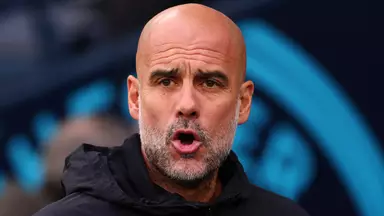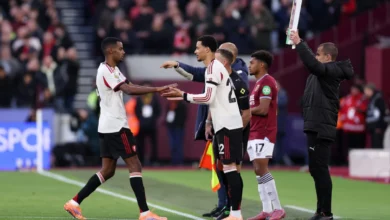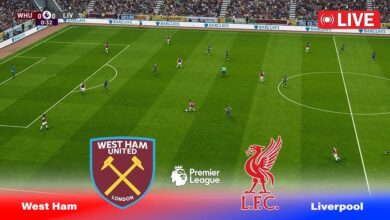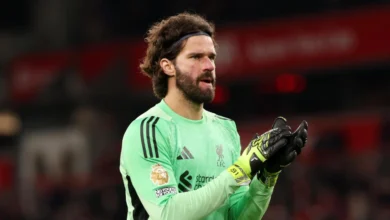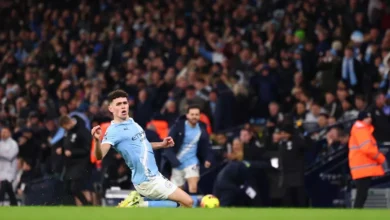Inside the Manchester City XI that could take the 25/26 Premier League by storm after £250m transfer window
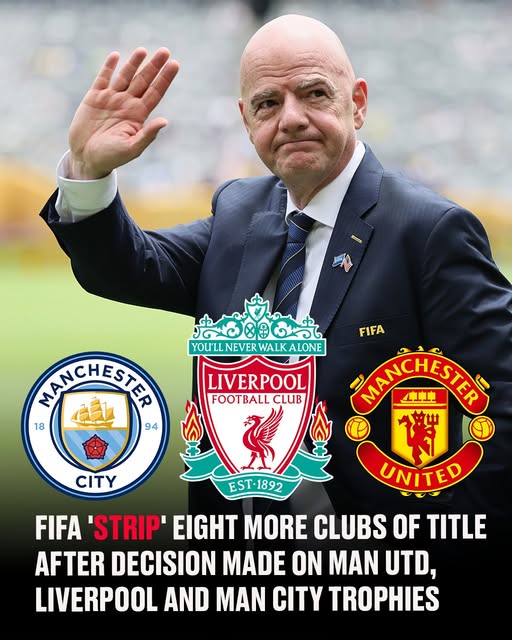
The 2024/25 season has exposed the fragility that lurks beneath Manchester City’s veneer of invincibility. Their current predicament – fighting merely for fourth place and FA Cup glory – represents a dramatic fall from the heights of their previous achievements. The 22-point deficit to Liverpool serves as a stark reminder that even the most successful footballing machines require constant evolution to maintain their competitive edge.
The signs of decline have been evident for keen observers throughout the campaign. An aging squad, whose collective experience once provided the foundation for their success, has become a liability as Father Time catches up with key personnel. Players who once seemed immune to the effects of age and accumulated fatigue have begun showing clear signs of deterioration, creating gaps in quality and intensity that opposing teams have been quick to exploit.
Pep Guardiola, renowned for his tactical innovations and squad management, faces perhaps his greatest challenge at Manchester City. The Catalan manager must navigate the delicate process of dismantling the core that delivered unprecedented success while simultaneously constructing a new foundation capable of returning the club to its former glory. This transition requires not only tactical acumen but also the psychological management of players whose contributions have defined an era.
The current crisis extends beyond mere results on the pitch. Manchester City’s identity as the Premier League’s dominant force has been challenged, and their aura of inevitability has dissipated. Opponents approach matches against City with increased confidence, no longer intimidated by the reputation that once guaranteed psychological advantages before kick-off. This shift in perception represents perhaps the most significant challenge facing Guardiola’s reconstruction efforts.
Goalkeeping Revolution: The Ederson Dilemma
The potential departure of Ederson represents one of the most significant decisions facing Manchester City’s hierarchy. The Brazilian goalkeeper, who has been instrumental in Guardiola’s possession-based system, has experienced a notable decline in form throughout the current campaign. His distribution, once considered the gold standard among modern goalkeepers, has become increasingly erratic, while his shot-stopping ability has raised questions about his continued suitability as City’s number one.
Fabrizio Romano’s reports suggesting Ederson’s likely departure have added credence to speculation about Manchester City’s willingness to make difficult decisions regarding established stars. The goalkeeper’s potential exit would represent a philosophical shift, acknowledging that past contributions cannot justify continued selection when current performance levels fail to meet required standards.
The identification of Vanja Milinkovic-Savic as a potential replacement demonstrates Manchester City’s continued commitment to finding goalkeepers who can contribute to their tactical approach. The Torino goalkeeper’s impressive physical presence – standing at 6 feet 8 inches – provides a different profile from Ederson while maintaining the technical ability necessary to function within Guardiola’s system.
Milinkovic-Savic’s potential arrival would represent more than a simple replacement; it would signal Manchester City’s adaptation to evolving goalkeeping demands. Modern football increasingly requires shot-stoppers who can dominate their penalty area while contributing to build-up play. The Serbian international’s combination of physical attributes and technical skills suggests he could provide the foundation for Manchester City’s defensive reconstruction.
The reported £25 million valuation for Milinkovic-Savic represents reasonable value in today’s inflated transfer market. His age profile aligns with Manchester City’s apparent strategy of balancing experience with long-term potential, ensuring that significant investments contribute to both immediate improvement and sustained success over multiple seasons.
Defensive Stability: Evolution Rather Than Revolution
Despite Manchester City’s defensive struggles throughout the current campaign, Pep Guardiola appears inclined toward evolutionary rather than revolutionary changes to his backline. The decision to maintain faith in existing personnel reflects both financial pragmatism and tactical continuity, acknowledging that defensive partnerships require time to develop the understanding necessary for consistent performance.
Abdukodir Khusanov’s integration into the first team represents Manchester City’s commitment to youth development while addressing immediate needs. The defender’s half-season of Premier League experience provides valuable adaptation time, allowing him to understand the tactical demands and physical requirements of English football. His partnership with Ruben Dias offers the potential for long-term defensive stability, combining youth with experience in a manner that has historically proven successful.
The full-back positions, occupied by Rico Lewis and Josko Gvardiol, demonstrate Manchester City’s tactical flexibility and commitment to players who can contribute in multiple phases of play. Both defenders possess the technical ability to participate in Manchester City’s possession-based approach while providing the pace and athleticism necessary for defensive transitions. Their retention suggests Guardiola’s satisfaction with their development and continued potential.
While defensive reinforcements have been linked with Manchester City, including Theo Hernandez and Andrea Cambiaso, the reported lack of significant investment in this area reflects the manager’s priorities. The decision to allocate the majority of transfer funds to attacking positions suggests confidence in the defensive foundation while acknowledging more pressing needs elsewhere in the squad.
Midfield Metamorphosis: The Heart of City’s Rebuild
The midfield department represents the epicenter of Manchester City’s planned transformation. The area that once provided the creative foundation for their success has become the source of their current struggles, with established stars showing clear signs of decline that have undermined the team’s overall effectiveness.
Ilkay Gundogan’s situation exemplifies the difficult decisions facing Manchester City’s hierarchy. The German international’s contributions to previous success are undeniable, yet his current performances suggest a player whose best days are behind him. The club’s possession of a one-year extension option provides flexibility, but exercising it may represent sentiment over pragmatism in the harsh reality of elite football.
Kevin De Bruyne’s potential departure would represent the end of an era. The Belgian midfielder’s creative genius has been central to Manchester City’s tactical approach, but injuries and age have taken their toll on his effectiveness. His contract situation provides natural closure to a relationship that has defined much of Manchester City’s success, allowing both parties to pursue new challenges without acrimony.
Jack Grealish’s future at the Etihad remains uncertain, with suggestions of his potential departure reflecting his struggles to justify his significant transfer fee. The English winger’s inability to consistently impact matches has raised questions about his suitability for Guardiola’s tactical demands, making him a candidate for departure if suitable offers materialize.
The Bruno Guimaraes Gambit: A Statement of Intent
Bruno Guimaraes emerges as Manchester City’s primary midfield target, representing the type of signing that could define their reconstruction efforts. The Newcastle United midfielder combines technical ability with physical presence, offering the versatility necessary to function in multiple roles within Guardiola’s tactical system. His Brazilian nationality may also ease the transition, providing cultural familiarity that could accelerate his adaptation process.
The reported £100 million release clause represents a significant investment, but one that could prove transformative for Manchester City’s midfield dynamics. Guimaraes’ age profile ensures that such an investment would provide value over multiple seasons, while his Premier League experience eliminates the adaptation period often required for overseas signings.
The potential partnership between Guimaraes and a fit-again Rodri offers tantalizing possibilities for Manchester City’s tactical evolution. Both players possess the technical skills necessary for Guardiola’s possession-based approach while providing the defensive discipline required for high pressing systems. Their combination could provide the midfield foundation necessary for sustained success in both domestic and European competitions.
Adam Wharton’s emergence as another midfield target demonstrates Manchester City’s commitment to youth development alongside established talent acquisition. The young midfielder’s potential provides long-term strategic value while ensuring that immediate needs are addressed through experienced signings like Guimaraes.
The Youth Integration Strategy
Manchester City’s apparent emphasis on youth integration represents a strategic shift that acknowledges both financial constraints and the need for long-term planning. The development of players like Rico Lewis, Nico O’Reilly, and other academy graduates provides cost-effective squad strengthening while maintaining connection to the club’s identity and values.
The balance between youth development and experienced signings requires careful management to ensure that immediate competitive needs are met while building for future success. Manchester City’s history of successful youth integration provides confidence that this approach can yield positive results, but it requires patience and support from all stakeholders.
The financial benefits of youth development cannot be understated in an era of increasing transfer fees and Financial Fair Play constraints. Successful academy graduates provide not only playing value but also potential transfer income if they outgrow their role at the club, creating a sustainable model for squad development.
Strategic Implications and Championship Prospects
The proposed £250 million investment represents more than squad improvement; it signals Manchester City’s determination to reclaim their position at the summit of English football. The scale of investment demonstrates the ownership’s commitment to maintaining competitive standards while acknowledging the need for significant change.
The success of this reconstruction project depends not only on individual player quality but also on the tactical integration of new signings into Guardiola’s system. The manager’s track record of successfully implementing new personnel provides confidence, but the scale of change presents unique challenges that require careful management.
The competitive landscape of the 2025/26 Premier League will determine whether Manchester City’s investment yields the desired results. Liverpool’s current dominance, Arsenal’s continued development, and other clubs’ own strengthening efforts create a challenging environment where success is far from guaranteed despite significant investment.
Financial Considerations and Sustainability
The £250 million investment must be viewed within the context of Financial Fair Play regulations and Manchester City’s overall financial strategy. The scale of spending requires careful planning to ensure compliance with regulatory requirements while maximizing competitive impact.
Player departures will play a crucial role in financing new arrivals, with established stars like Grealish, Gundogan, and potentially De Bruyne providing transfer income that can be reinvested in squad improvement. The balance between incoming and outgoing transfers will determine the net investment required and the sustainability of the reconstruction project.
The long-term financial implications extend beyond immediate transfer costs to include salary commitments and performance-related bonuses. Manchester City’s ability to manage these ongoing costs while maintaining competitive squad quality will determine the long-term success of their strategic approach.
Conclusion: A New Dawn at the Etihad
Manchester City’s planned £250 million transformation represents one of the most ambitious reconstruction projects in modern football history. The scale of change acknowledges the end of one era while laying the foundation for another, requiring careful balance between honoring past success and embracing future possibilities.
The success of this project will depend on numerous factors, from individual player adaptation to tactical integration and competitive response from rival clubs. However, Manchester City’s resources, infrastructure, and managerial expertise provide reasons for optimism about their ability to return to the summit of English football.
The 2025/26 season will serve as the ultimate test of this reconstruction strategy. Whether the new-look Manchester City can reclaim their position as Premier League champions remains to be seen, but their willingness to invest significantly in squad transformation demonstrates the ambition necessary for sustained success in elite football.
The revolution at Manchester City represents more than roster changes; it embodies the club’s determination to maintain their status among football’s elite regardless of the cost or complexity involved. As the transfer window approaches, the football world watches with anticipation to see whether Guardiola’s reconstruction project can restore Manchester City to their former glory.

